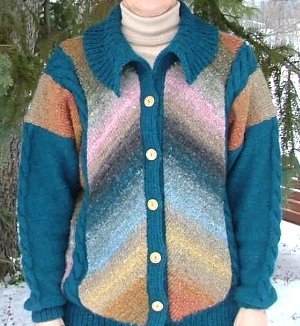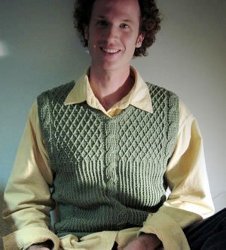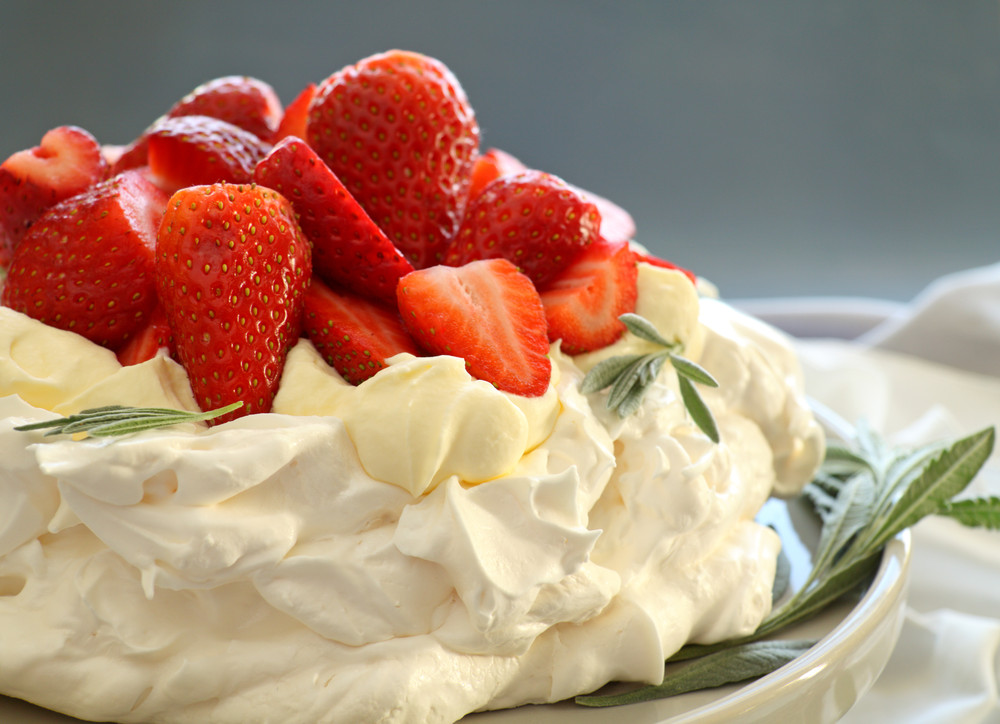
Everyone loves donuts, there’s something about that delicious deep fried treat that brings a smile to everyone’s face. Donut Day celebrates this wonderful treat, it’s history and a special holiday brought into being to honor a special group that arose during World War I. One of the little-known facts about the Donut is exactly what that well-known shape is called, read on, and maybe you’ll find out!
The history of the donut isn’t clearly known, but what is known is that their iconic look started making an appearance in the United States in the mid-1800’s. Rumor has it a gentleman by the name of Hanson Gregory invented them, out of a distaste for the under cooked centers and greasiness of the existing shapes and options. The shape was said to be obtained by punching a hole in the center with a tin pepper box.
There are many varieties of donuts outside of that most commonly known, including twist donuts, fritters, and the hugely varied and popular filled donut. Filled donuts come in a huge variety, including the very popular Devil Dog, a chocolate covered delight filled with a rich cream. Glazed donuts filled with all sorts of delicious fruit, with raspberry being a runaway favorite throughout the world, and lemon filling being an equally popular.
Donut Day came to pass, in part, due to the efforts of a doctor in the military in the first World War who sought to brighten the day of the wounded soldiers he worked on. On his first day to the Military Base, he purchased 8 dozen donuts and gave one to each soldier he worked on. After giving one to Lieutenant General Samuel Geary, who received it with great mirth and appreciation for the doctors work, Samuel decided to start a fundraiser, letting the young doctor, Morgan Pett, to continue to provide donuts to his patients.
This fundraiser began working together with the Salvation Army who, after a fact-finding mission, determined that many needs of the soldiers could be met by creating social centers that would provide all sorts of amenities, including the donuts. The Salvation Army sent 250 volunteers to France to help put these huts together, which soon became a mainstay of military life. One record of a day in the huts recorded up to 300 donuts and 700 cups of coffee being served as part of their service. Due to the majority of the workers being female, the Salvation Army workers started to be known as “Donut Dollies.”
These huts went a long way to improving the overall life of the soldiers during the war and has become a tradition that the Salvation Army continues to this day as a fundraiser for this wonderful organization.

Matthieu Bourel is a collage and digital German artist whose work veers uneasily
from nostalgia to technological dystonia.
Word of the Day
| |||
| Definition: | (adjective) Marked by uncontrolled excitement or emotion; ecstatic. | ||
| Synonyms: | excited, frantic, mad, unrestrained | ||
| Usage: | A crowd of delirious baseball fans cheered the home team to a shutout victory. | ||

Idiom of the Day
kids will be kids— Kids behave childishly or immaturely by nature, so it is unrealistic to expect otherwise. |

History
US President Grover Cleveland Gets Married in the White House (1886)
Though President Cleveland entered the White House a notorious bachelor—having allegedly fathered a child out of wedlock—he did not remain single for long. Having become the executor of his deceased law partner's estate a decade earlier, Cleveland had supervised the upbringing of his partner's daughter, Frances. She visited him in the White House in 1885, and the two were married in the Blue Room a year later, making him the only president to be married there.
Johnny Weissmuller (1904)
| Weissmuller was a five-time Olympic gold medalist with 67 world records in swimming when, in 1932, he turned in his swimsuit for a loincloth and became Tarzan, the Ape Man. He starred in 12 Tarzan films and created the memorable "Tarzan yell" before being replaced by a younger actor in 1948. He then went on to star in a series of Jungle Jim movies adapted from comic books. Afterward, he ran his own swimming pool company. |
Black Music Month
Black Music Month is observed in June each year in the United States. Created by music executives Kenny Gable and Ed Wright as a way to celebrate and promote black music, the special designation has been proclaimed each year since 1979 by the President. At the White House in Washington, D.C., a concert and reception is held each year that features various genres of African-American music, including R&B, jazz, blues, and hip hop. Throughout the country, public and private organizations host numerous educational programs and cultural festivals recognizing the achievements of black musicians.
Washing Hands in Cold Water 'As Good as Hot'
US scientists say they have poured cold water on the theory that washing hands with hot water kills more germs than unheated water. The small study of 20 people found using water at 15C (59F) left hands as clean as water heated to 38C (100F) .READ MORE:

Washing hands in cold water 'as good as hot' - BBC News
1835 - P.T. Barnum launched his first traveling show. The main attraction was Joice Heth. Heth was reputed to be the 161-year-old nurse of George Washington.
1857 - Composer Sir Edward William Elgar was born.
1896 - Guglieimo Marconi's radio telegraphy device was patented in Great Britain.
1897 - Mark Twain, at age 61, was quoted by the New York Journal as saying "the report of my death was an exaggeration." He was responding to the rumors that he had died.
1937 - "The Fabulous Dr. Tweedy" was broadcast on NBC radio for the first time.
1966 - Surveyor 1, the U.S. space probe, landed on the moon and started sending photographs back to Earth of the Moon's surface. It was the first soft landing on the Moon.
1967 - In the U.S., "Sergeant Pepper's Lonely Hearts Club Band" was released by the Beatles. It was released on June 1 in the U.K. and around the world.
1969 - The National Arts Center in Canada opened its doors to the public.
1979 - Pope John Paul II arrived in his native Poland on the first visit by a pope to a Communist country.
2003 - In Seville, Spain, a chest containing the supposed remains of Christopher Columbus were exhumed for DNA tests to determine whether the bones were really those of the explorer. The tests were aimed at determining if Colombus was currently buried in Spain's Seville Cathedral or in Santo Domingo in the Dominican Republic.

READERS INFO
NBC Orders ‘The Handmade Project’ Crafts Competition Reality Series Hosted By Amy Poehler & Nick Offerman

Amy Poehler and her Paper Kite Productions are making a foray into unscripted TV with The Handmade Project, a competition reality show which has received a six-episode straight-to-series order by NBC. Poehler is reuniting with her former Parks and Recreation co-star Nick Offerman on the show, which celebrates artisanship and the makers who can create amazing things with their hands … and a few tools too.
Interested in being on the show?
2.
Ever Thought of Publishing Your Patterns?
Pattern A Day wants original knitting or crochet pattern submissions for the Pattern-A-Day Calendar. If you would like to showcase your knitting or crochet designs in the 2017 edition of the Knitting Calendar™ or the Crochet Calendar™
Due: before October 15th
3.
FLAG WOOL and FIBER FESTIVAL
The Pioneer Museum
Flagstaff, AZ
June 3, 2014
9 AM - 4 PM
FREE
There's something for everyone! All day shearing, animal exhibits, artisan vendors, fiber arts demonstrations, kids activities, great local food and beer, and so much more!
further information: Flag Wool and Fiber
4.
BIG SKY FIBER FESTIVAL 2017

Big Sky Fiber Festival takes place in the big town of Hamilton (www.cityofhamilton.net), about 30 miles south of Missoula, MT. The County Fairgrounds has a new Convention Center building that is perfect for vendors, demos and hanging out. And of course, the fairgrounds has the animal facilities we need to acknowledge our friends who actually grow all this great fiber for us.
The Big Sky Fiber Arts Festival is a 3-day show.
Passes may be purchased at the gate.
The entry fee is $10 for a 3-day pass or $5 for a one-day pass.
further information: Big Sky Fiber Festival 2017


The first issue (March 1939) of paper currency in the Protectorate of Bohemia and Moravia, an unissued 1938 Republic of Czechoslovakia one koruna note originally intended for the Czech army. During the beginning of the German occupation of Czechoslovakia, an oval stamp was applied to the unissued 1938 stock of notes, identifying the currency as valid in the Protectorate. The overprint reads "Protektorat Böhmen und Mähren, Protektorat Cechy a Morava".
IF WASPS FIND COLORED PAPER THEY'LL MAKE RAINBOW COLORED NESTS
In an interesting experiment, biology student Mattia Menchetti gives colored construction paper to wasps and photographs the results


knit
thanks, Emily

knit
thanks, Judith

knit
2009 Afghan: The June Square pattern by Lorena Haldeman
Overall, this afghan was designed to be a learn-more-as-you-go project. While you could certainly make an afghan out of the easiest first couple of months, ...
| |||||||
Preview by Yahoo
| |||||||
knit
thanks, Helen
CUPCAKE DOLLS
kriskrafter
Materials: DK yarn size 3 (3.25mm) Needles Abbreviations: CO = cast on KFB = knit in front and back (this is an increase) p =purl k =knit Stst = stockinette stitch (knit one row, then purl the next row) K2tog = knit 2 stitches together (this is a decrease)
*This is knitted flat, starting at the bottom and working upward.
Base of cupcake
1. CO 6 sts 2. KFB across. [12 sts] 3. P 4. *KFB, K1 repeat from * across. [18 sts] 5. P 6. *KFB, K1 repeat from * across. [27 sts] 7. P 8. *KFB, K2 repeat from * across. [36 sts] 9. P 10. *KFB, K2 repeat from * across. [49 sts] 11. Knit (to create fold line)
Skirt
1-18. Work 18 rows in K1, P1 to create rib. 19. Bind off in purl (firmly).
Body
1. Pick up and K 36 stitches on wrong side opposite fold line. 2-4. Stst 3 rows 5. *k4, k2tog, repeat from * across. 6. Stst 3 rows. 7. *k3, k2tog, repeat from * across. 8. P 9. *k1, k2tog, repeat from * across. **change to head color 1. Stst 3 rows. 2. *Kfb, k1, repeat from * across. 3. P 4. *Kfb, k1, repeat from * across. 5. Stst 7 rows 6. *K4, k2tog, repeat from * across. 7. P 8. *K3, k2tog, repeat from * across. 9. P 10. *K1, k2tog, repeat from * across. 11. P 12. K2tog across. 13. Cut yarn leaving a tail to thread thru darning needle and gather remaining stitches. 14. Sew on eyes and face detail. 15. Sew seams and stuff to your desired fullness. 16. Sew on hair.
Arms -
1. CO 8 sts.
2-9. Stst 8 rows. *Change to hand color 10. K across. 11. P across. 12. *K1, k2tog repeat from * across to last 2 sts, k2. [6 sts] 13. P 14. Cut yarn leaving a tail to thread thru darning needle and gather remaining stitches. 15. Sew on arms.
Cupcake hat.
CO 38 sts.
1-4. K1, p1 (rib) for 4 rows.
5. K
6. *PFB, K2, repeat from * across.
7. K
8. P
9. *K2tog, YO, repeat from * across.
10. P
11. K
12. Pick up stitch from first new color row and P2tog across.
13-16. Stst 4 rows.
14. *K3, k2tog, repeat from * across.
15. P
16. k2, k2tog, repeat from * across.
17. P
18. k1, k2tog, repeat from * across.
19. P
20. K2tog across.
21. Cut yarn leaving a tail to thread thru darning needle and gather remaining stitches.
22. Sew seam.
23. Sew on pretty "sprinkles" using other colored yarns. -I supposed tiny beads could be used as an option for the sprinkles.
|


crochet
thanks, Mindy
crochet
crochet
thanks, Sharon

thanks, Shelley



thanks, Gloria
Pavlova Cake
 Ingredients:
Ingredients:
- 4 egg whites
- 7.8 oz (220 g) sugar
- 2 teaspoons starch
- 1 tablespoon lemon juice
- 14 fl oz (400 ml) whipped cream (with minimum fat content of 33%)
- 3 tablespoons icing sugar
- 17.6 oz (500g) any berries and fruits
Directions:
- In a bowl, combine sugar and starch.
- Beat egg whites with an electric mixer on high speed. Add sugar-starch mixture gradually and continue beating until it turns glossy and smooth.
- Pour in the lemon juice and beat again. To check if the meringue is ready, scoop a spoonful and turn the spoon upside down — if the meringue sticks, it’s time to proceed to the next step.
- Line your baking pan with parchment paper and put the meringue on it. Form a shallow crater in the center of each meringue.
- Preheat oven to 350 degrees F (180 degrees C). Put the meringue in the oven and immediately turn down the heat to 230-250 degrees F (110-120 degrees C). The pavlovas are done when the outside is dry to the touch. Remove your meringue from the oven and let cool.
- For the cream: At high speed, beat the chilled cream and sugar.
- Spread the cream on top of the meringue. Decorate with berries and fruits.



thanks, Jill

Bouncy Castle Jigsaw Puzzle

| babble ballerina beer bereft bogus boot bugs children chronicle clear | comet cone congenial construct critical deliver dollar gotten | heart heel hire honey horrid lane life lounge | manual maybe might money music neon never | other reason shame small treat version |









No comments:
Post a Comment